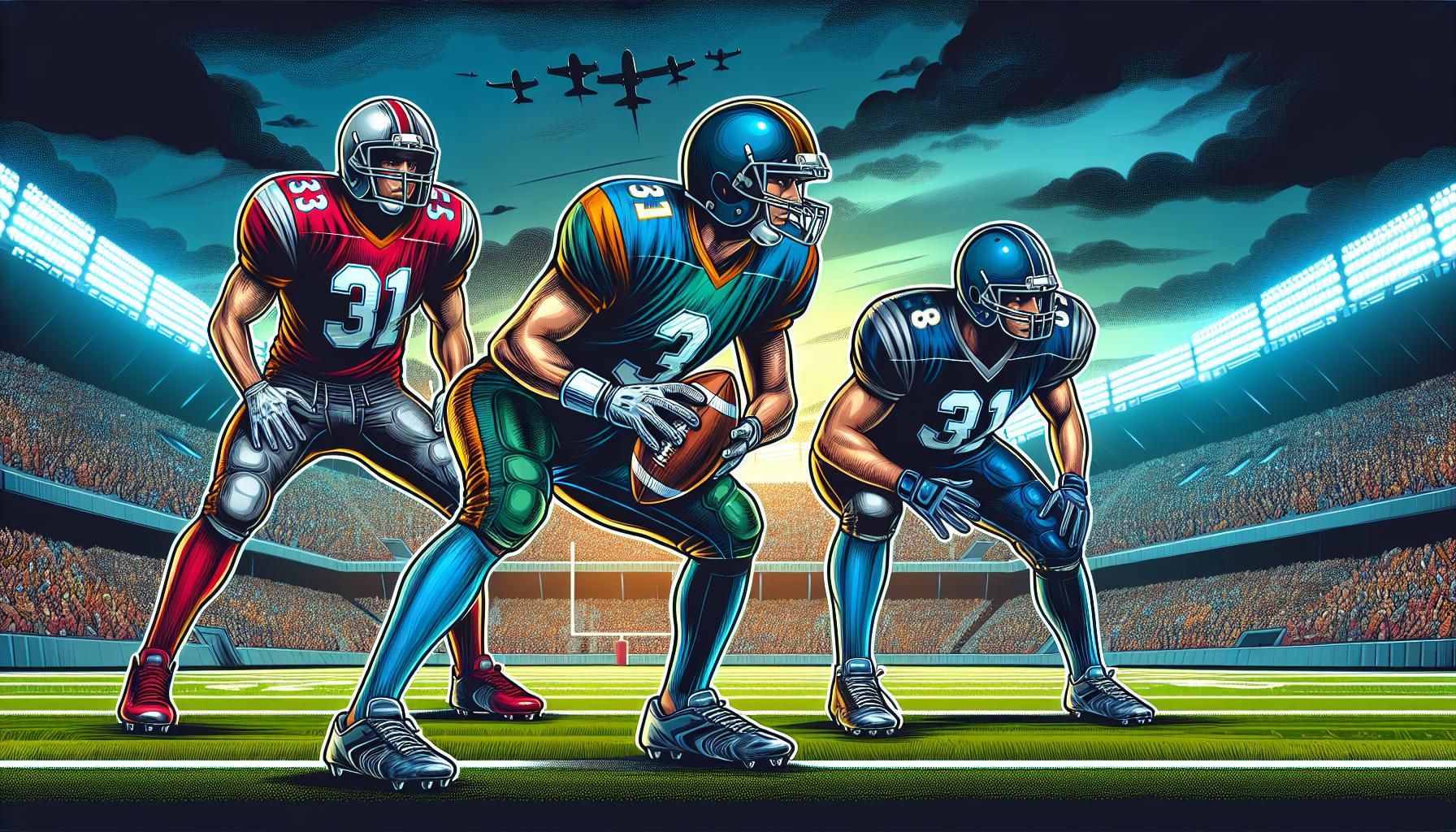Football’s playbook is packed with strategies designed to outsmart the opposition, and one formation that often grabs attention is “trips.” If you’ve ever watched a game and noticed three receivers lined up on one side of the field, you’ve seen trips in action. It’s a formation that creates opportunities for explosive plays and keeps defenses guessing.
I find trips fascinating because it’s not just about stacking players; it’s a tactical move that can shift the balance of a game. Whether it’s used to create mismatches, confuse coverage, or open up space for a big play, trips is a versatile tool in a team’s arsenal. Understanding this formation can give you a deeper appreciation for the strategy behind football’s fast-paced action.
Understanding Trips Formation In Football
Trips formation places three receivers on one side of the field, creating offensive opportunities. This alignment forces defenses to adjust their coverage, often exposing vulnerabilities. Coaches rely on this setup to manipulate defensive schemes and open passing lanes.
Spacing within the trips formation is crucial. Receivers typically align with specific distances to maximize separation while avoiding overlapping routes. For instance, they may position at the line of scrimmage, five yards back, and ten yards out, ensuring clear passing zones.
Play designs from trips formation vary. Offenses use combinations like “flood concepts” or vertical routes to stress the secondary. Examples include directing one receiver deep, another intermediate, and one short to stretch the defense horizontally and vertically.
Defensive countermeasures include zone or man coverage adaptations. In zone, defenders divide responsibilities, focusing on areas rather than individuals. With man coverage, defenders shadow specific receivers, though it risks mismatches if one receiver outmatches a defender.
Strategic flexibility defines trips formation. It’s adaptable for short-yardage conversions, deep strikes, and red-zone plays. By leveraging receiver talent and alignment, teams create plays tailored to exploit defensive structures.
How Trips Formation Works
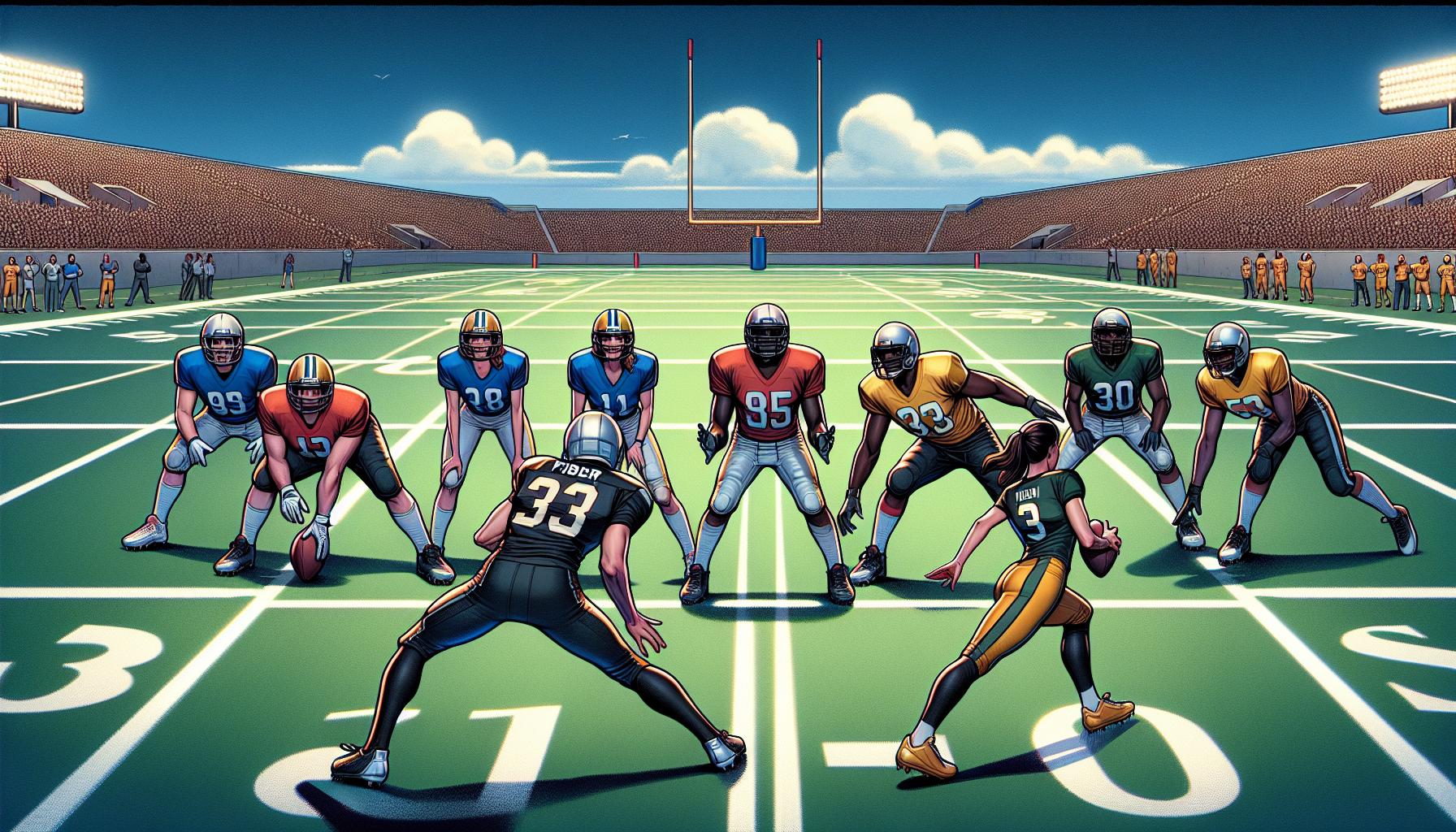
The trips formation creates unique opportunities for offenses by stacking three receivers to one side of the field. Execution relies on precise alignment and role clarity among players.
Design And Player Alignment
This setup features three receivers positioned with specific spacing on one side. The widest receiver aligns near the sideline, the middle receiver occupies a slot position a few yards inside, and the innermost receiver typically lines up close to the tackle. The spacing separates defenders, preventing coverage overlap while maximizing route options. Quarterbacks and offensive coordinators depend on this structure to exploit zones or outmatch isolated defenders.
Roles And Responsibilities
Each receiver in the trips formation executes a distinct role. The widest receiver often runs deep routes to stretch the defense vertically, creating space underneath. The middle receiver handles intermediate routes, acting as a primary target for quick throws or crossing patterns. The innermost receiver typically runs short routes or blocks, manipulating coverage or aiding in creating running lanes. Quarterbacks read these routes sequentially, identifying mismatches or gaps in the defense.
Benefits Of Using Trips Formation
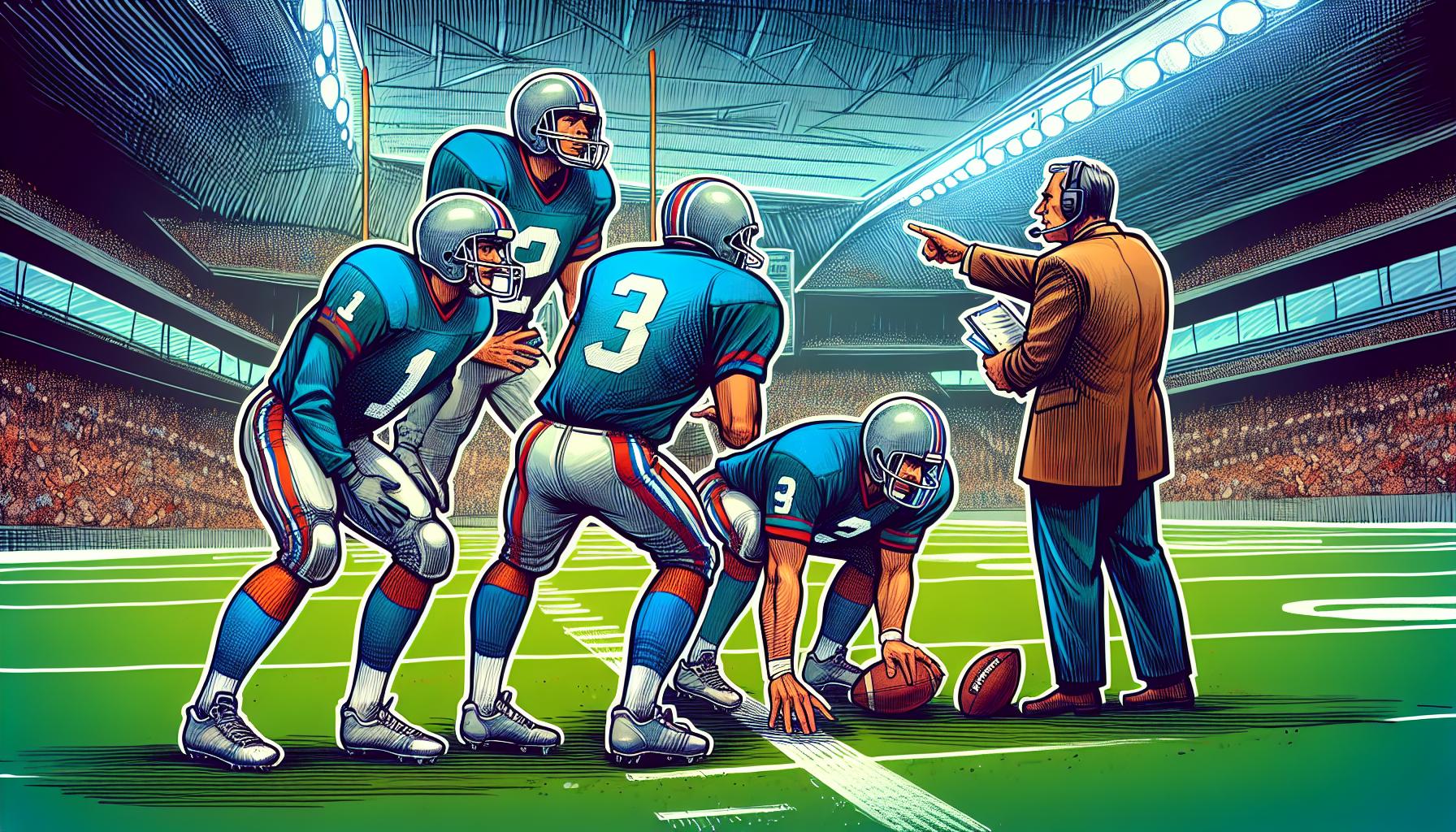
Trips formation offers several key benefits that give offenses a tactical edge. By leveraging its structure, teams can exploit defensive weaknesses and maximize offensive efficiency.
Offensive Advantages
Trips formation creates spacing and mismatches that open up multiple play options. With three receivers aligned on one side, I can force defenders into isolate coverage, creating opportunities to exploit weaker matchups. This setup facilitates quick reads and simplified progressions for quarterbacks, enhancing execution speed.
The alignment stretches defensive coverage horizontally and vertically. Flood concepts, where receivers attack different levels of the field, maximize efficiency by targeting zones with fewer defenders. Additionally, the trips formation supports both deep passes and short-yardage gains, giving the offense versatility in playcalling.
Defensive Challenges It Creates
Trips formation disrupts defensive structures, exposing vulnerabilities in coverage schemes. When I align three receivers on one side, defenses must decide whether to shift additional players to that side, risking undercoverage elsewhere on the field.
This setup pressures defenders to communicate effectively. If coordination falters, gaps appear in zones, or mismatches occur in man-to-man coverage. Forcing defenses to adjust frequently fosters confusion, especially against motion or pre-snap shifts within the formation.
Trips also challenges defensive backfield depth. Layered route combinations test secondary units, increasing the likelihood of blown assignments or mental errors during play execution.
Common Variations Of Trips Formation

The trips formation comes in multiple variations that adapt to situational needs on the field. Each variation alters alignment, spacing, or backfield setups to challenge defenses more effectively.
Trips Right Vs Trips Left
Trips right and trips left refer to the side of the field where the three-receiver grouping aligns. Trips right places the receivers on the quarterback’s right, while trips left shifts them to the left. The choice depends on factors such as defensive weaknesses, quarterback preference, and field positioning. For example, aligning trips to the short side (boundary) of the field limits defensive coverage options, while to the wide side (field) it maximizes available space for routes. Defensive adjustments in response dictate which side provides a better tactical advantage for specific plays.
Empty Backfield In Trips
Empty backfield in trips removes any running backs from the backfield, creating a five-wide receiver set. This spreads the field entirely, forcing defenses to cover more ground and exposing coverage mismatches. In this setup, the trips side typically consists of the same three-receiver grouping, complemented by two additional receivers on the opposite side. The quarterback operates alone in the backfield, relying on quick passes to counter blitzes. Teams often use this variation in obvious passing situations to isolate favorable matchups or exploit zone gaps.
Situations In Which Trips Formation Is Used
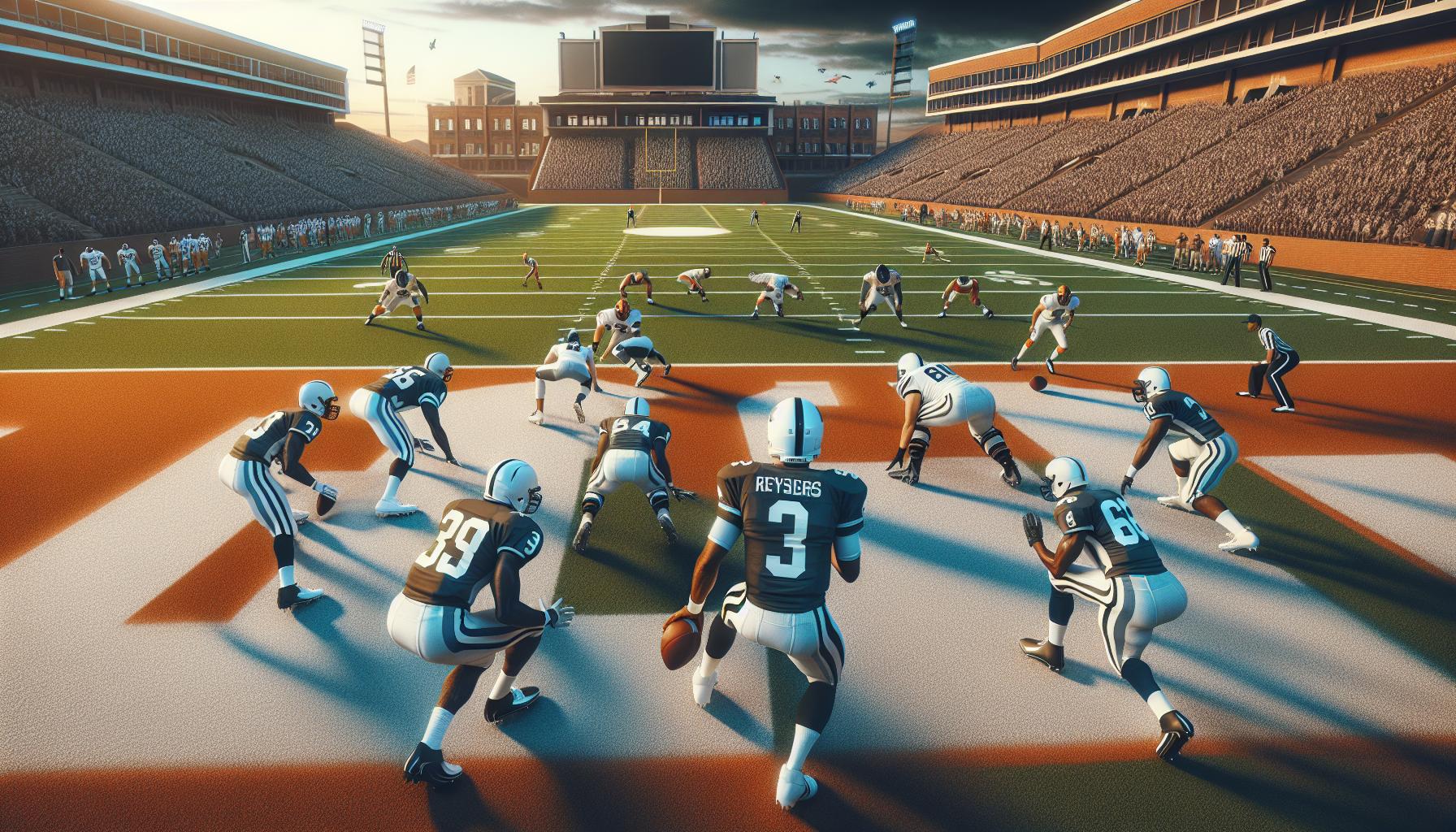
Teams use the trips formation in various scenarios to maximize offensive effectiveness. This setup thrives in passing situations by creating advantageous matchups and exploiting defensive gaps. It’s especially effective when defenses adopt rigid zone schemes, as the condensed alignment forces coverage adjustments.
- Third-Down Conversions
Offenses often rely on trips formation on third down to manipulate coverage and isolate routes. Receivers stagger their depths to exploit zone windows or force defensive switches in man coverage. For example, a shallow route combined with a deep vertical can create confusion in coverage responsibilities.
- Red Zone Plays
The trips formation excels in tight spaces where precise timing and compact routes are crucial. It’s used to stretch the defense laterally while isolating a single receiver on the opposite side to create scoring opportunities. Concepts like pick routes or slants within the trips side target quick gaps in coverage near the goal line.
- Two-Minute Drill
During hurry-up scenarios, the trips formation helps streamline pre-snap reads for quarterbacks by stacking the receiving options in one zone. This minimizes setup time and increases flexibility to target short, intermediate, or deep defenders based on gaps in coverage.
- Flood Concepts in Coverage
Coaches use the trips alignment to deploy “flood” routes aimed at overloading a zone. With three receivers attacking different levels, defenders risk being outnumbered or caught out of position. This is particularly common against defenses that rely on cover-3 or cover-2 zone structures.
- Isolating Mismatches
Trips formation often isolates a running back, tight end, or single wide receiver on the opposite side. This forces defenders into one-on-one situations, allowing offenses to exploit mismatches, such as a slower linebacker covering a faster receiver.
- Third-and-Long Situations
On longer yardage plays, teams use the trips setup to maximize space and threaten the defense vertically. Seam routes, deep posts, or crossing patterns are common routes in these scenarios, stressing defenders over extended coverage distances.
By tailoring the trips formation to specific situations, teams highlight defensive vulnerabilities and create significant offensive opportunities.
Notable Teams And Players Utilizing Trips Formation
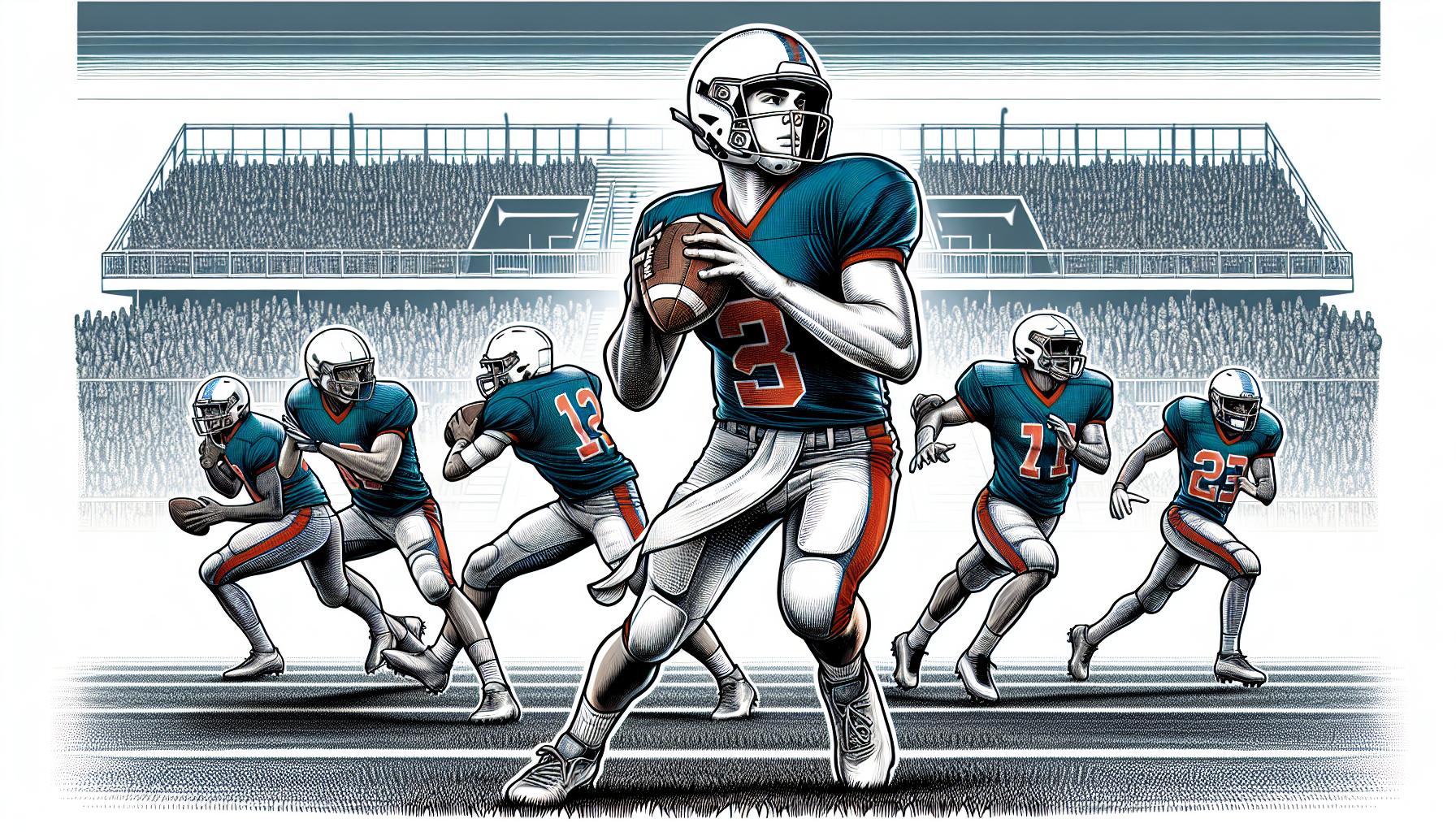
Certain NFL teams and players have consistently excelled with the trips formation, leveraging its tactical benefits to dominate opposing defenses. The Kansas City Chiefs, led by quarterback Patrick Mahomes and head coach Andy Reid, frequently incorporate trips into their offense. Mahomes exploits the spacing and mismatches created by this alignment, often connecting with targets like Travis Kelce in critical game situations.
The New England Patriots also utilized the trips formation effectively during Tom Brady’s tenure. Brady’s precision passing, combined with the team’s structured play design, highlighted how trips formations can dissect defenses. Players like Julian Edelman thrived in the slot positions within the trips setup.
The Green Bay Packers, with Aaron Rodgers at the helm, demonstrated the formation’s versatility. Rodgers’ ability to read defenses and extend plays helped maximize opportunities from trips alignments. Dynamic receivers such as Davante Adams capitalized on spacing to produce explosive plays.
In collegiate football, coaches like Lincoln Riley at the University of Southern California (formerly Oklahoma) have integrated trips into high-powered offenses. Quarterbacks such as Kyler Murray and Baker Mayfield used their mobility to exploit openings created by trips, delivering both short passes and deep throws.
Wide receivers who excel in creating separation, like Stefon Diggs and Tyreek Hill, often dominate in trips formations. Their speed and route-running precision disrupt defensive schemes, forcing adjustments in coverage strategies.
Conclusion
The trips formation is a powerful tool that transforms offensive strategy in football. Its ability to create mismatches, stretch defenses, and adapt to various game situations makes it a favorite among coaches and players alike. With precise alignment and well-executed routes, it forces defenses to make tough decisions and opens up opportunities for big plays.
From third-down conversions to red-zone dominance, trips offers unmatched versatility. Whether in the NFL or college football, its impact on the game is undeniable, showcasing the brilliance of modern offensive design.
Frequently Asked Questions
What is the trips formation in football?
The trips formation in football features three receivers aligned on one side of the field. This alignment creates spacing and mismatches, allowing offenses to confuse defenses and exploit weaknesses both horizontally and vertically.
Why is the trips formation so effective?
The trips formation is effective because it forces defenses to adjust their coverage, creating mismatches and opening passing lanes. It also simplifies the quarterback’s reads and enhances offensive flexibility for various play types.
How does spacing impact the trips formation?
Proper spacing in the trips formation ensures receivers avoid overlapping routes and maintain separation. This alignment helps stretch the defense and maximizes passing opportunities.
What play designs work well with the trips formation?
Common play designs include flood concepts, vertical routes, and quick passes. These plays stress defenses by overloading zones or creating one-on-one opportunities against defenders.
How do defenses counter the trips formation?
Defenses adapt by using zone or man coverage adjustments. However, these adaptations can create vulnerabilities elsewhere on the field, which offenses aim to exploit.
When is the trips formation most effective?
The trips formation is especially effective in third-down conversions, red-zone plays, and two-minute drills. It helps isolate mismatches and exploits coverage gaps in critical situations.
What are the key receiver roles in the trips formation?
The widest receiver positions near the sideline, the middle receiver aligns in the slot, and the innermost receiver lines up closer to the tackle. Each player runs specific routes to stress the defense and create opportunities.
What are variations of the trips formation?
Variations include trips right, trips left, and empty backfield formations. Each adjusts the alignment based on the quarterback’s perspective or removes running backs to maximize receiver options.
Which NFL teams use the trips formation effectively?
Teams like the Kansas City Chiefs, New England Patriots, and Green Bay Packers have successfully integrated the trips formation, leveraging its spacing and tactical advantages to maximize offensive opportunities.
Which players thrive in the trips formation?
Receivers like Tyreek Hill, Stefon Diggs, and Julian Edelman excel in the trips formation due to their ability to create separation, exploit matchups, and run precise routes.
